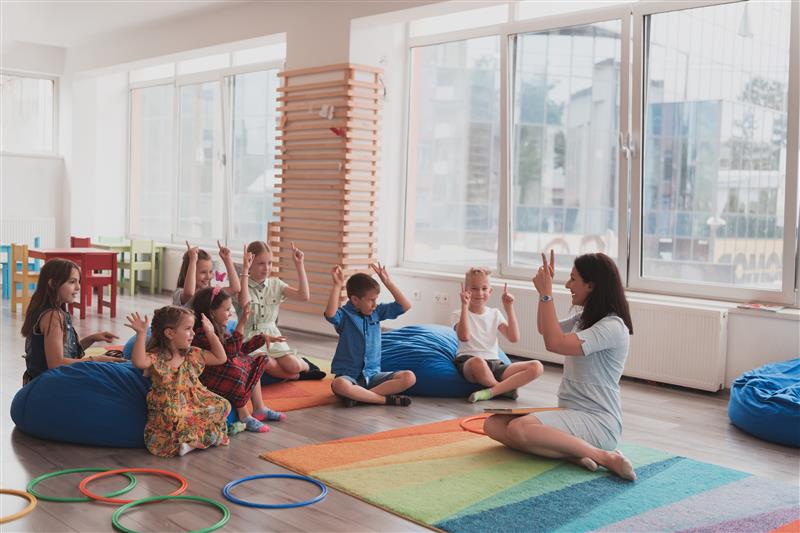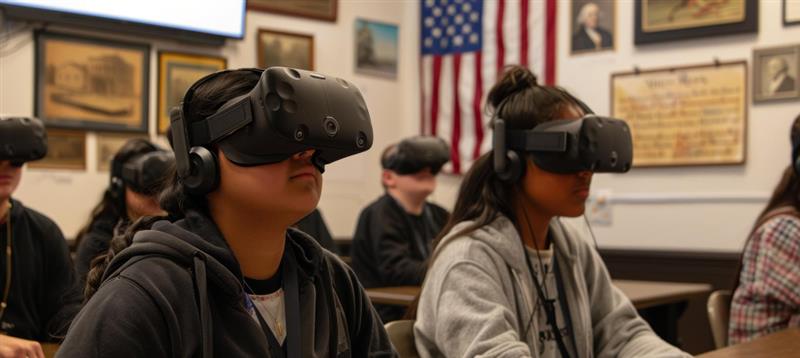If you’ve spent even five minutes on TikTok lately searching “TikTok Teacher Hacks”, you’ve probably seen teachers trying out hacks to make classrooms more fun, organized, or tech-friendly. From clever timers to mini whiteboards, there’s no shortage of ideas. Do they actually help, or are they just trends that look good in a short video?
We have rounded up 15 viral TikTok teacher hacks and taken a closer look at what really works in the classroom.
1. The Sticky Note Exit Ticket Hack
What TikTok shows: Students answer a quick question on a sticky note and post it on the door while leaving. Supposedly, it’s a fun way to check understanding at the end of class.
In reality: It can be fun and gets kids moving, but managing piles of sticky notes every day is messy. Students might rush or copy from friends, especially in bigger classes.
Best use: Lower grades, special events, or one-off activities. Be ready to tidy up afterward.
2. The TikTok Timer Trick
What TikTok shows: Teachers use popular TikTok sounds as timers. The beat tells students when to start or stop activities.
In reality: It’s catchy, and some students focus better with the music. But others can get distracted or even start dancing! In busy classrooms, it might be too much noise.
Best use: Short transitions or breaks. Works best with younger kids.
3. The “Phone Jail” Box
What TikTok shows: Kids put their phones in a see-through box or a mini “jail” during class to stay focused.
In reality: It can prevent sneaky texting and help group activities run smoothly. But some students feel anxious without their phones, and high schoolers might argue over it.
Best use: Middle schools, exam days, or short periods. Avoid leaving phones locked up all day.
4. DIY Whiteboards with Sheet Protectors
What TikTok shows: Slip a blank sheet into a plastic sleeve and give students dry-erase markers. Instant mini whiteboards!
In reality: Cheap, reusable, and kids love them. But lower-quality sleeves can stain or get messy.
Best use: Almost any classroom, especially if you’re on a budget. Just keep markers clean.
5. Desk Pets for Motivation
What TikTok shows: Tiny toy animals are given as rewards for effort, good behavior, or completing tasks. Students “collect” and “feed” their pets.
In reality: Kids go crazy for them, especially in elementary grades. But they can become distractions, and some pets get lost or traded.
Best use: Young learners with clear rules. Great for motivation.
6. Glow Stick Rewards
What TikTok shows: Hand out glow sticks for quiz participation or game winners. The glowing classroom is supposed to boost excitement.
In reality: Fun at first, but students lose interest if overused. Some teachers worry about safety or clean-up.
Best use: One-off events like review days. Not ideal for daily rewards.
7. Digital Spinner for Random Calls
What TikTok shows: Apps pick students randomly to answer questions, like a wheel of fortune.
In reality: Fair and easy, giving shy students a turn too. But some kids get nervous about being chosen unexpectedly.
Best use: Most ages, with the option for anxious students to skip occasionally.
8. “Two-Minute Clean Up Song” Hack
What TikTok shows: Play a popular song and challenge the class to tidy up before it ends.
In reality: Motivates most kids and cleans the room quickly. Just make sure students focus on cleaning, not dancing.
Best use: Daily resets, end-of-activity clean-ups.
9. QR Code Scavenger Hunts
What TikTok shows: Hide QR codes around the room. Students scan them and solve clues related to the lesson.
In reality: Combines tech with movement, keeping engagement high. Biggest challenge is prep time and device availability.
Best use: Special projects or review days. Check tech access first.
10. Silent Signals with Hand Gestures
What TikTok shows: Students use hand signals for bathroom breaks, water, or questions to cut down interruptions.
In reality: Works smoothly if everyone remembers the signals. New students might forget or misuse them.
Best use: Classes with consistent routines. Spend a few days teaching the signals.
11. Flexible Seating with Yoga Mats & Pillows
What TikTok shows: Students choose where to sit on mats, pillows, or standing desks.
In reality: Some kids love the freedom, others take advantage and chat. Class size and space limit how well it works.
Best use: Reading time, small group work, or quiet activities. Monitor for distractions.
12. The Sticky Note Voting Wall
What TikTok shows: Students vote on options using sticky notes on a wall chart.
In reality: Interactive and gives every student a voice. Sticky notes can pile up or fall off quickly.
Best use: Small groups or occasional polls, not daily.
13. DIY Standing Desks from Milk Crates
What TikTok shows: Stack crates for fidgety kids to work at standing height.
In reality: Affordable and clever, but can be unsafe if unstable. Some schools ban it.
Best use: Brief use under supervision, not all day.
14. Google Form Quizzes with Instant Feedback
What TikTok shows: Students get immediate scores after online quizzes, saving grading time.
In reality: Saves hours and motivates students to correct mistakes quickly. But tech glitches and student familiarity can be issues.
Best use: Classes where students have reliable devices and internet access.
15. The Classroom Jobs Board
What TikTok shows: Assign rotating roles like board cleaner or tech helper to build responsibility.
In reality: Students enjoy taking ownership, and it lightens the teacher’s load. Tracking changes can be tricky, and some students swap jobs secretly.
Best use: Regular updates with clear rules.
TikTok Hacks, Engagement, and Stats
TikTok has a big influence on education in 2025. Majority of teachers use some kind of tech tool inspired by social media. Education hashtags like #teachers and #students are hugely popular, and ideas spread fast.
Teachers say the main goal is keeping kids curious while saving time. Quick videos and creative trends can work, but not every hack fits every classroom. Sometimes the clean-up or prep isn’t worth it.
Final Take
TikTok teacher hacks can make classrooms more playful, organized, and tech-friendly, but choose wisely. Some ideas are just for a laugh, others can truly help. Keep routines simple, pick what fits your students’ age, and always check safety and tech access.
Trends change, but student engagement is what really matters. The best hacks are the ones that let teachers teach effectively and help kids learn without adding stress.









